"Let nature take its course"
Make the best use of nature’s abundance to reduce our consumptive behaviour and dependence on non-renewable resources.
The horse icon represents both a renewable service and renewable resource. It can be used to pull a cart, plough or log and it can even be eaten – a non consuming use is preferred over a consuming one. The proverb “let nature take it’s course” reminds us that control over nature through excessive resource use and high technology is not only expensive, but can have a negative effect on our environment.

Broadening our perspective
Heliotrope moths – one here hosted by a paper daisy – feed on potato weed and salvation jane, also known as ‘patterson’s curse’. Annemarie is happy to have the moth in her market garden, and everyone enjoys the paper daisies. People coming to farm tours often go home with a posy of their flowers. The paper daisies are among a mix of flowering plants grown for beneficial bugs as part of integrated pest management.
Photo by Richard Telford at The Food Forest, on Kaurna Country, South Australia.
Submit your examples on Instagram #useandvaluerenewableresourcesandservices
Nominate and submit your favourites for the next Permaculture Calendar with #permaculturecalendar
Find out more
![]()
Use & value renewable resources & services examples from previous Permaculture Calendars
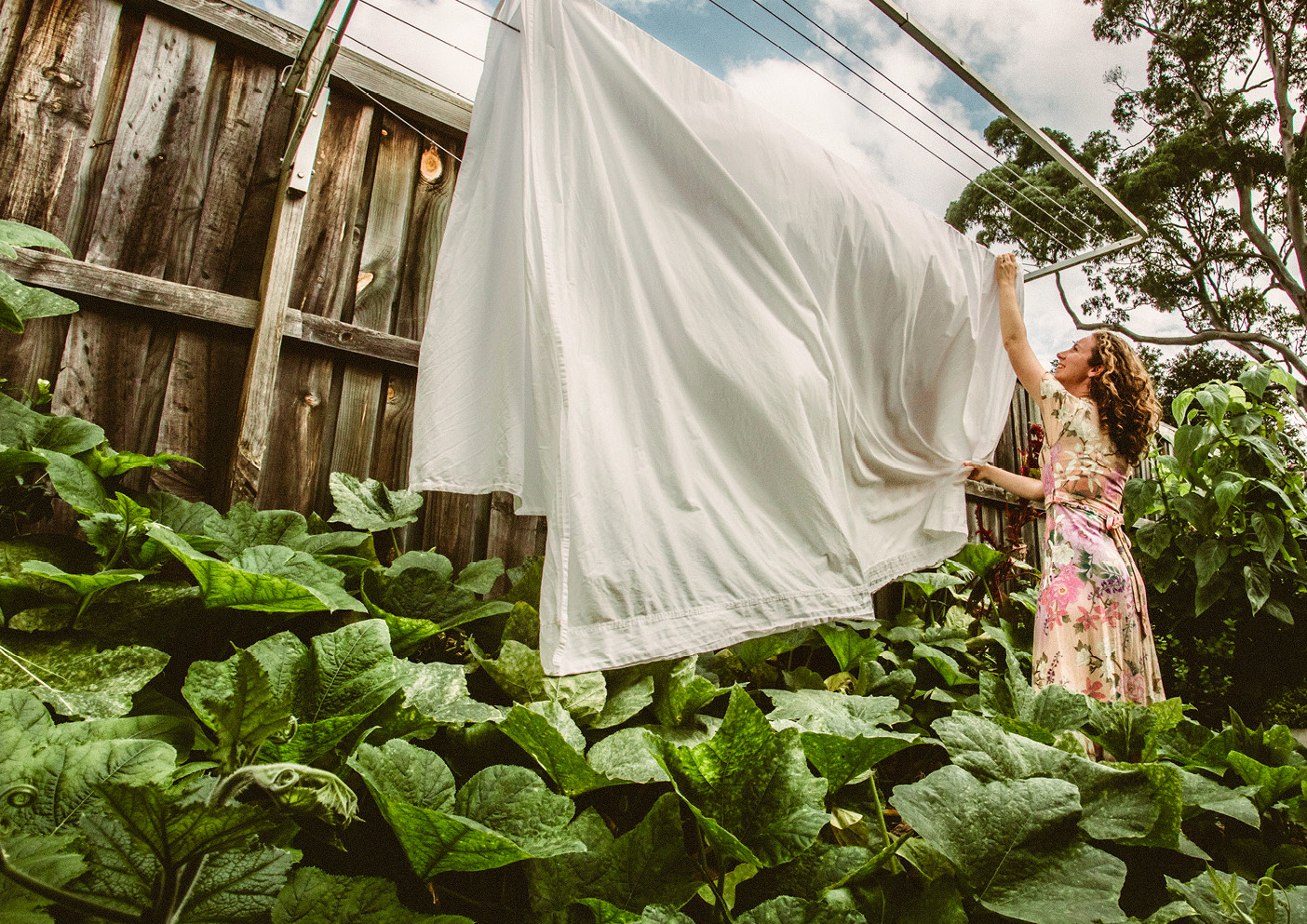
What’s old is new again
Laurie is in the backyard of their Sydney farmette hanging the washing out, knee deep in pumpkin vines. Sunshine and the breeze will dry the washing, and sun, compost, water and the genetics carried in seeds powers the prolific pumpkin growth. On hot days the washing helps by giving a little extra shade. They harvested 50 pumpkins from their backyard that year. Surplus pumpkins were traded within the local community for sourdough bread and other homemade or home grown produce.
Photo by Jacqui Turner, of Laurie Green, on Gadigal Country, Sydney, NSW, Australia.
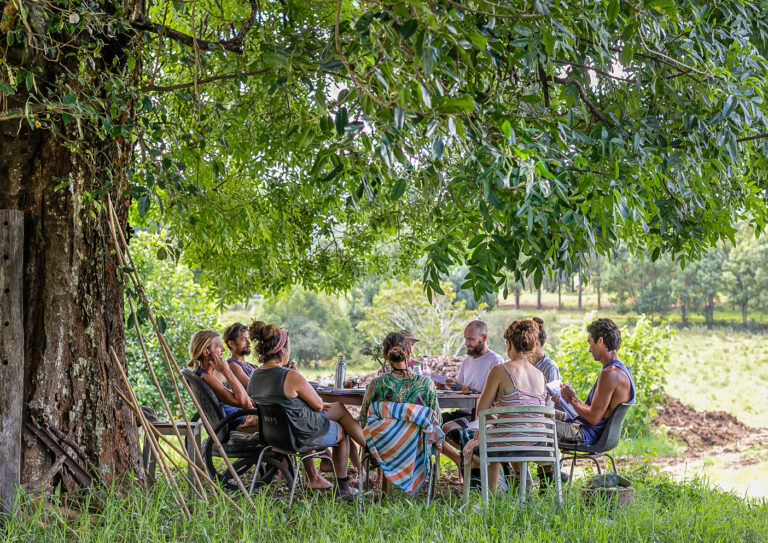
Autonomous air-conditioning
All things must pass, but some things grow fresh again. For this meeting, an old tree becomes an outdoor conference room and air conditioner; its cooling shade enhanced by its daily life-making transpiration of water. Through vesting knowledge and decision making in many people and good community practices, Conscious Ground Organics constantly increase their ability to evolve and renew.
Photo by Lara Arnott at Conscious Ground, Byron Bay, NSW, Australia
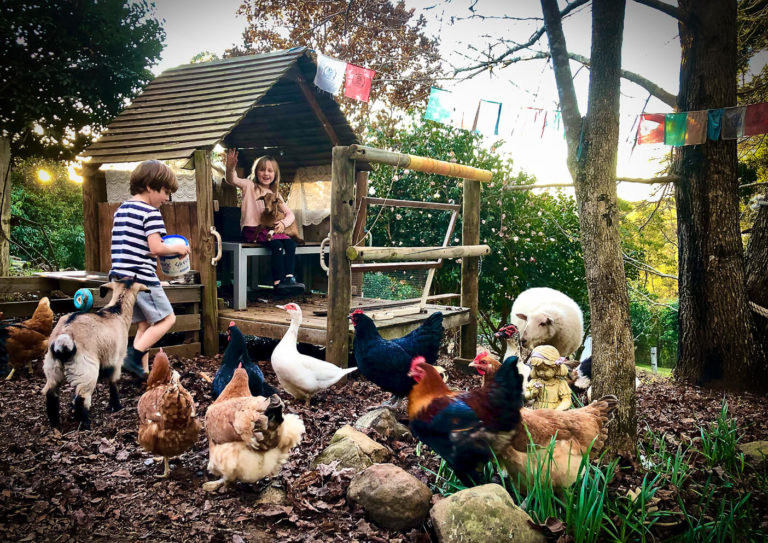
Kid power
Ava and Torsten enjoy helping out with and caring for the animals. The children’s energy is renewed by their love for them. These animals play important roles in the farm system. In foraging for food, the ducks and chickens manage pests, the sheep mow the lawn and the goats clear weeds around the farm. The manures help to build soil and increase the production of the orchard and kitchen garden, while also feeding the plants that feed the animals.
Photo taken by Sandi Pointner at Eagle Ridge Permaculture at Fountaindale, NSW, Australia
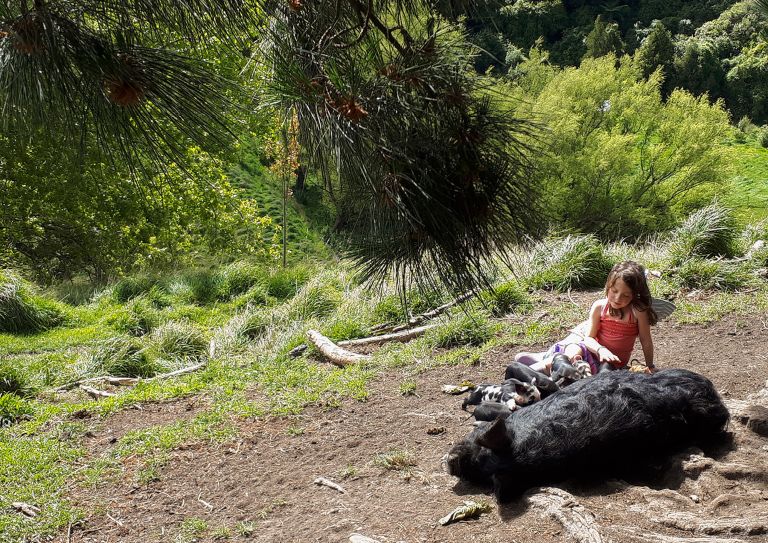
The best pigs for the job
Verti calmly pats this docile kunekune sow, which has been selected for free ranging in this valley. This remarkable breed, recovered from near extinction, can survive solely on good pasture without damaging the olive and avocado trees planted nearby. While no feed is purchased, food scraps are sourced locally to provide a more diverse diet. Shelters and water troughs are located at the top of the valley so the pigs bring nutrients uphill, which fertilise the trees downslope.
Photo by Dani Lebo at Kaitiaki Farm at Whanganui, New Zealand
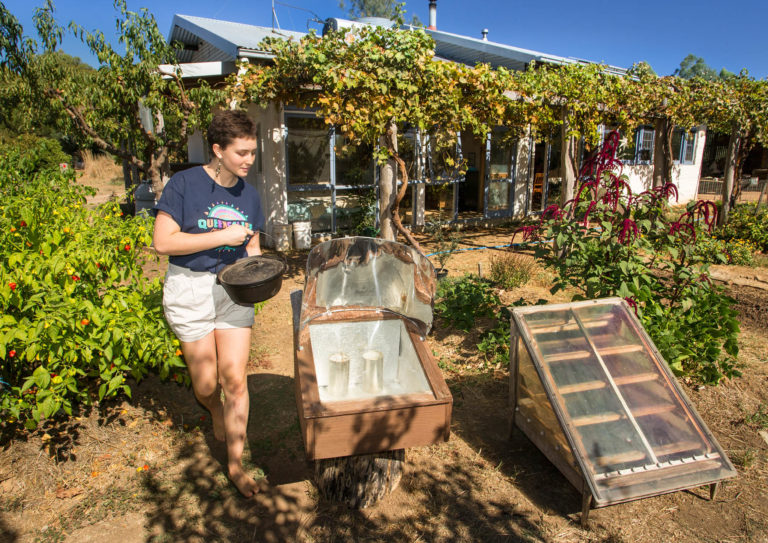
Working with the sun at Murrnong
Grace is putting the evening meal out to slow cook in the solar oven using the midday heat, and removing the cans of melted beeswax. Getting the meal prepared early frees up the milder evening hours for outdoor tasks. The solar dryer beside it generates a convection current to draw moisture out of food. The eave on the building behind excludes the sun during the hottest time of the year, supplemented by a deciduous grape vine during the late summer and autumn.
Photo taken at Murrnong Farm in Violet Town, Victoria, Australia by Oliver Holmgren.
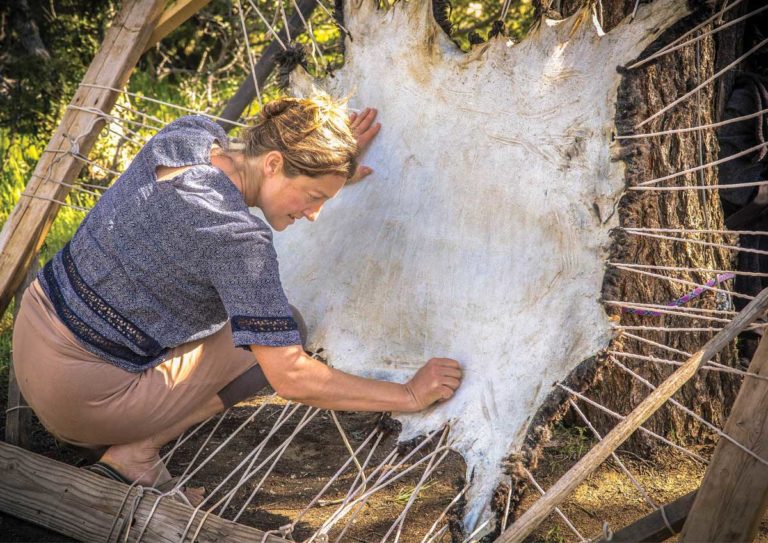
The art of hide tanning
Getting your meat from ethical sources also results in an ethically sourced hide. In showing the greatest respect for the life of an animal, the hide is preserved by tanning. Learning the full process is not for the faint of heart, making leather traditionally by hand is a physically demanding craft. Sasha stretches the sheep hide in one of the final steps in the process, that can then be transformed into soft wool lined clothing, warm indoor shoes, a seat cover or kept as a rug.
Photo by Ryan Spaulding at Quail Springs Permaculture in Cuyama Valley, California, United States
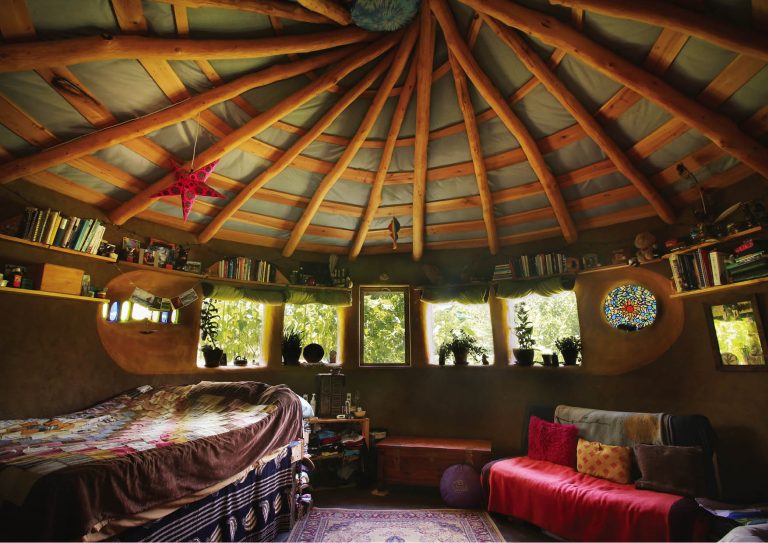
Natural building of the Hermitage
Hassan’s tiny round home has an earthen floor space of 20m2 (213ft2) and sits on a gravel foundation capped with concrete rubble. The walls are built using wooden pallets with upcycled foam and light clay straw for insulation. A heavy render of clay cob provides thermal mass which is finished with a thin natural plaster called alis to protect the surface. Locally harvested beams are used to create the stunning reciprocating structure that supports a green living roof.
Photo by Stephen Shapiro at Dancing Rabbit Ecovillage in Missouri, USA. Check out our Earth Render book for techniques like this.

Making an impact, with a small footprint
The Argentinian Permaculture Institute was designed and built to make an impression, serving as an example in the value of natural materials. It’s thatched roof and cob walls, if not maintained, would return back to the earth. Incorporated into the design is a naturally cooled seed bank that is constantly renewed by plantings in the surrounding gardens. Seed is sent all over the country to small scale farmers, expanding and refreshing the precious genetic resource.
Photo taken near Buenos Aires, Argentina and contributed by Gustavo Ramirez.
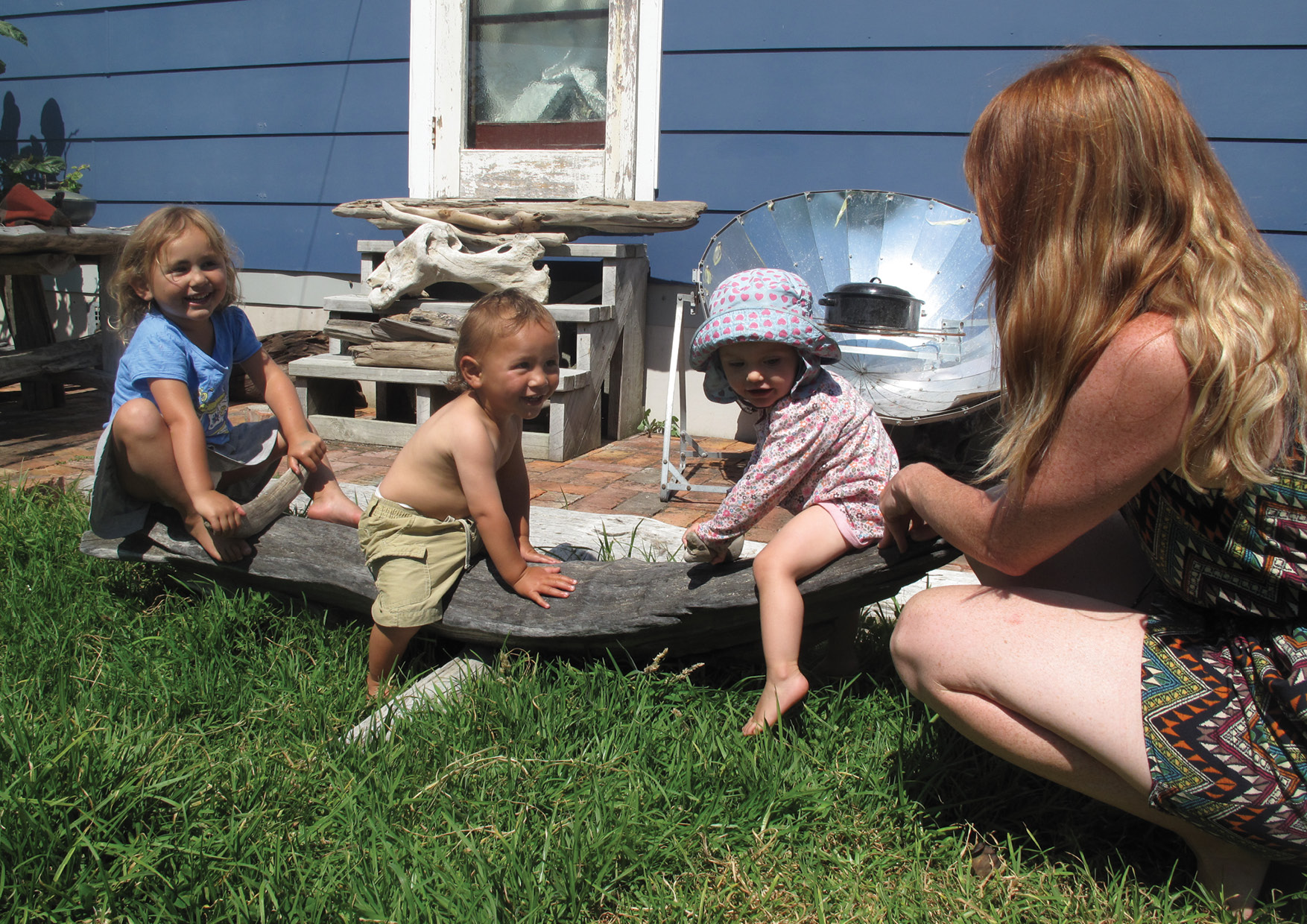
A see-saw from the sea shore
Takuya, Nonni and Verti are playing with a see-saw made with driftwood that was collected nearby. The harsh edges from the native hardwood have been weathered away by the sea, so it’s now ideal for use with children. Tactile, interesting and tough it’s likely to last well beyond the used-by-date of a manufactured see-saw, with the added benefit of a future transformation into something else. Dani is keeping an eye out for the kids, and also for the pot on the solar cooker.
Photo taken in New Zealand and contributed by Nelson Lebo
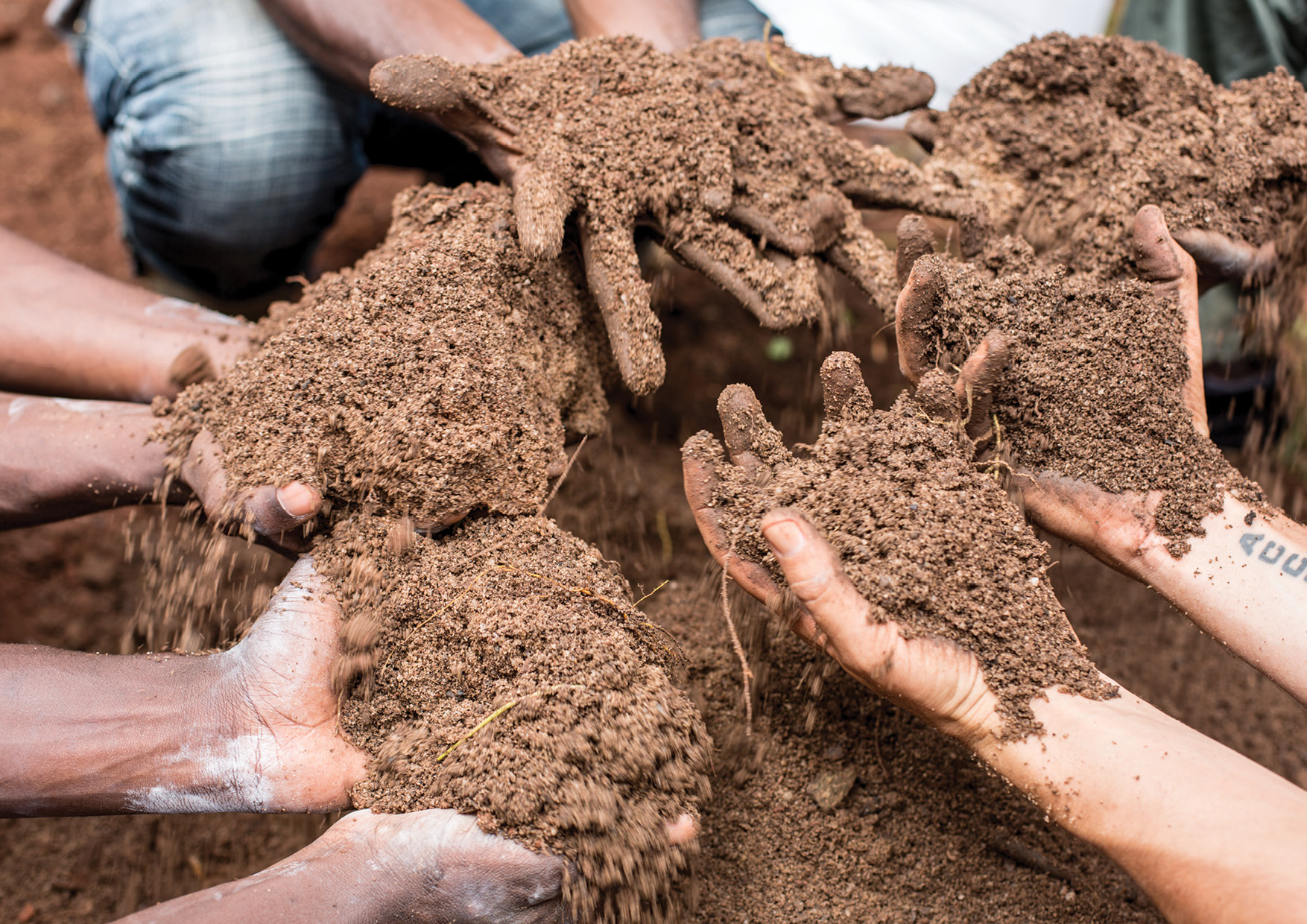
Getting in touch with the earth
People can be resilient, flexible and incredibly adaptable. Working by hand can give a sense of achievement that leaves a lasting impact. This workshop run for the Makerere Climate Change Association in Uganda focused on planting for biodiversity rather than for a single purpose. The students realised they could create a niche for their one acre nursery, promoting indigenous planting strategies with a vision for how they are going to shape the country’s forestry efforts.
Photo contributed by Barbara Pavie
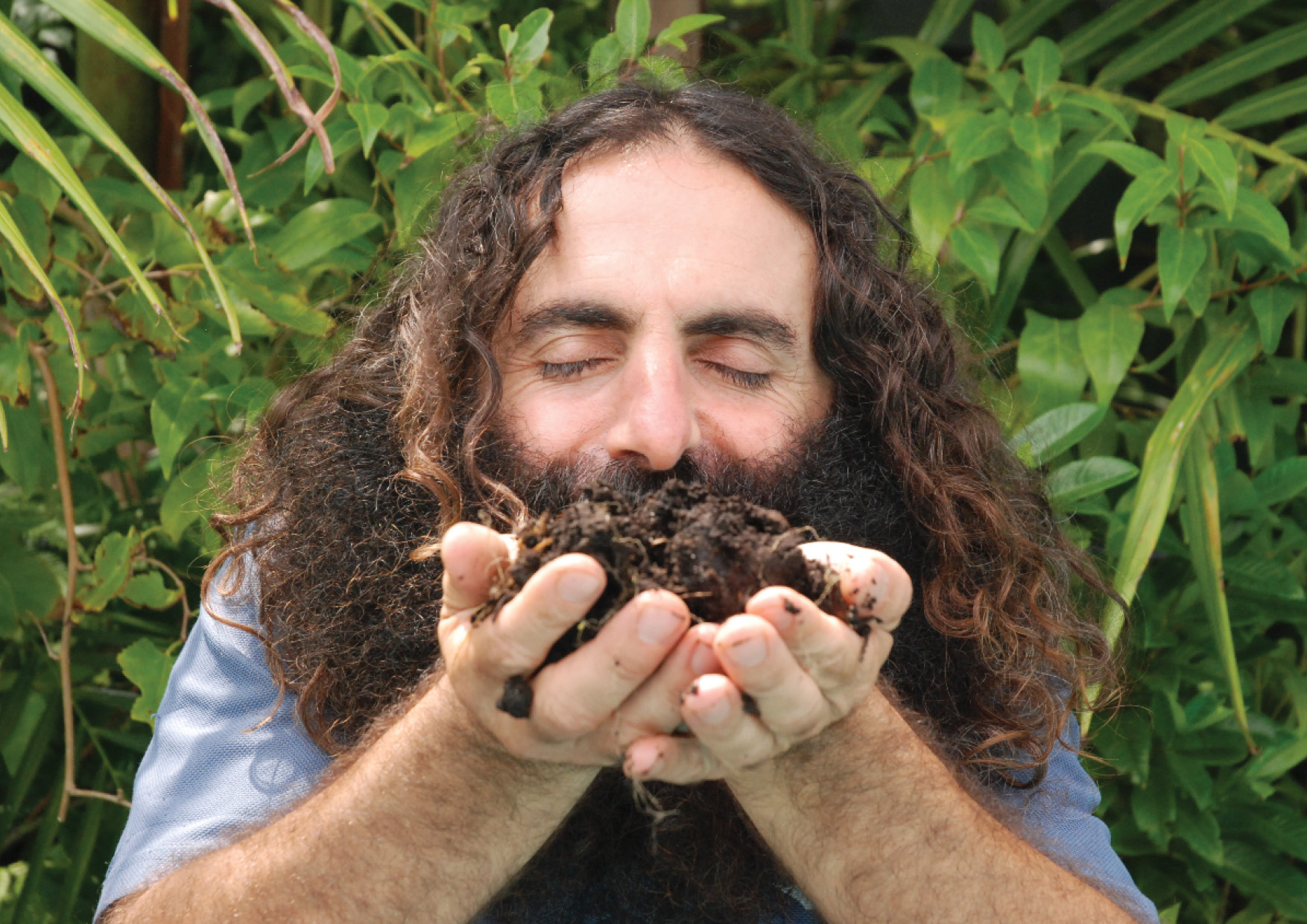
Soil sheik
Soil is the basis of every culture. We cannot survive without it. We must grow our soil, compost our organic waste and value it more than gold or oil so we can grow and eat healthy, local food. Our soil does not need expensive poisonous chemicals; it needs to be allowed to nurture living diversity. Let’s make compost from local resources and enjoy true wealth.
Text by Michele Margolis, photo of Costa Georgiadis contributed by Sunshine Poschinger
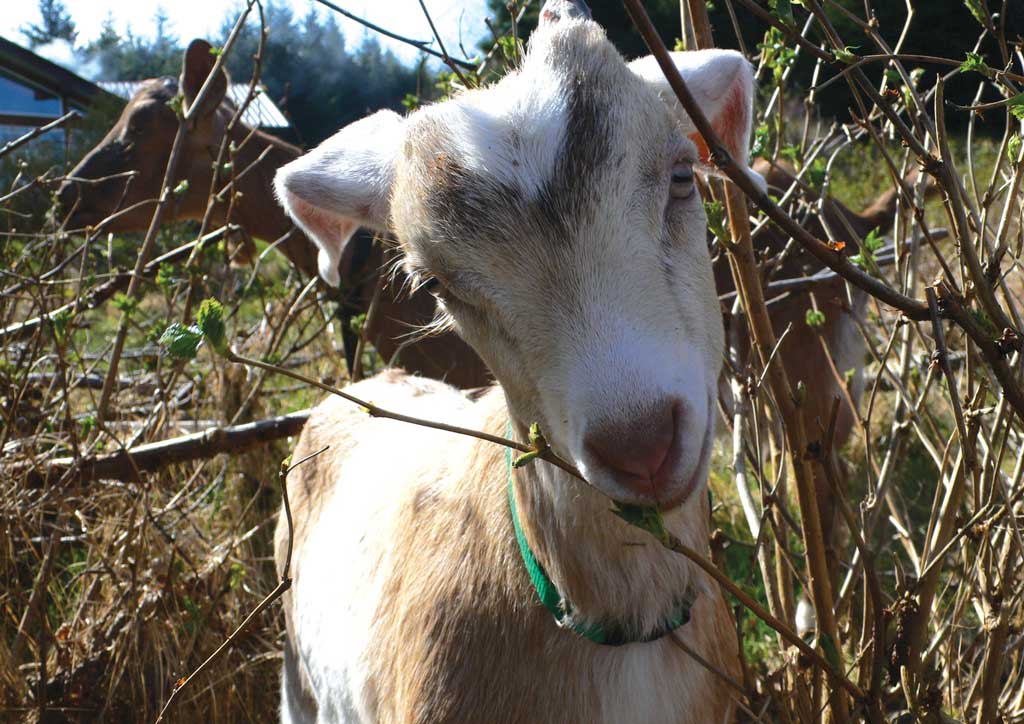
Feasting on Salmonberries
Goats have remarkably dexterous mouths that can negotiate eating the foliage and stems of thorny plants. Rubus berries can take over pastures, repelling grazing animals and enabling the spread of the forest. For goats these wild, abundant plants are just another meal. Goats mow grass, and convert tree and shrub prunings into milk, meat and manure. Animals can have a productive niche in the fertility cycle, completing the loop.
Photo taken at St. Mary’s Spring Estate, Canada and contributed by Joel Catchlove

Jim Walsh with his giant schnauzer Tom doing an easy 40 km/hr
“Tom and I have reached a maximum recorded speed of 64.8 km/hr in this cart. On a cool day he has pulled me around for 6 hours in one day and, like most working breeds, he loves doing it. How great would it be if carparks were replanted with useful trees where happy dogs might rest before taking their owners home at the end of the day.” – Jim Walsh
Photo credit: Asiafoto.
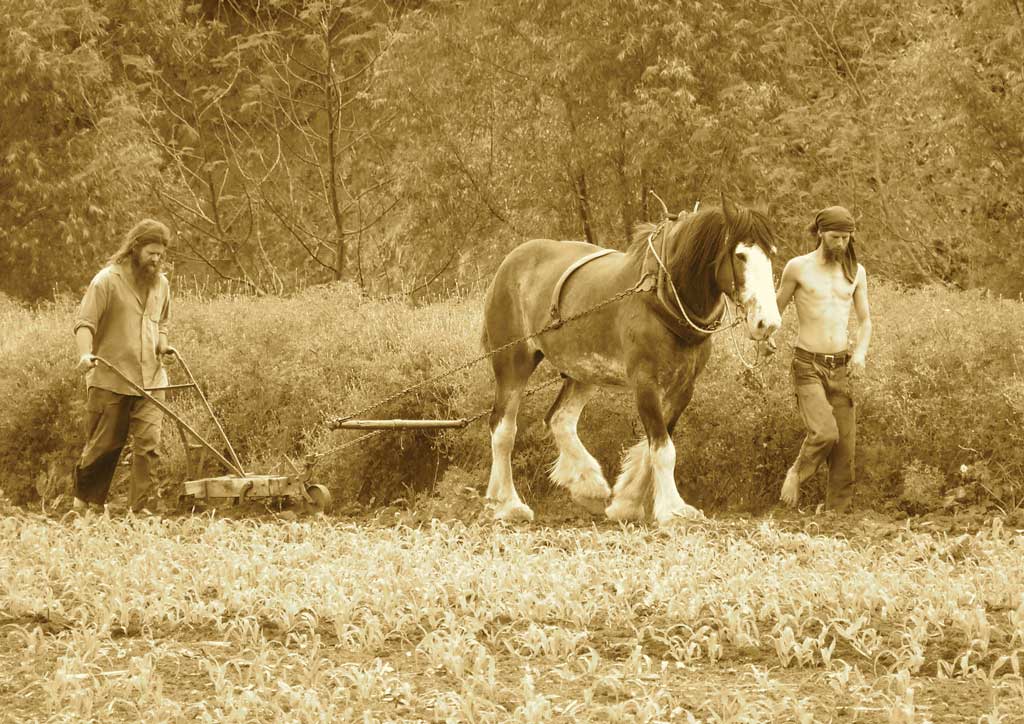
Weeding between the rows
Joseph is on the handles while Abraham keeps Major from straying as they weed along the last row of maize. Two months earlier they turned most of last year’s lupin crop into the soil, but saved some (behind) for seed. Willows and acacias (background) stabilise the bank of a beautiful stony bed river, before a steep hill of native bush. November 2006.
Photo taken at St Francis Farm in New Zealand and contributed by Christoff Schneider
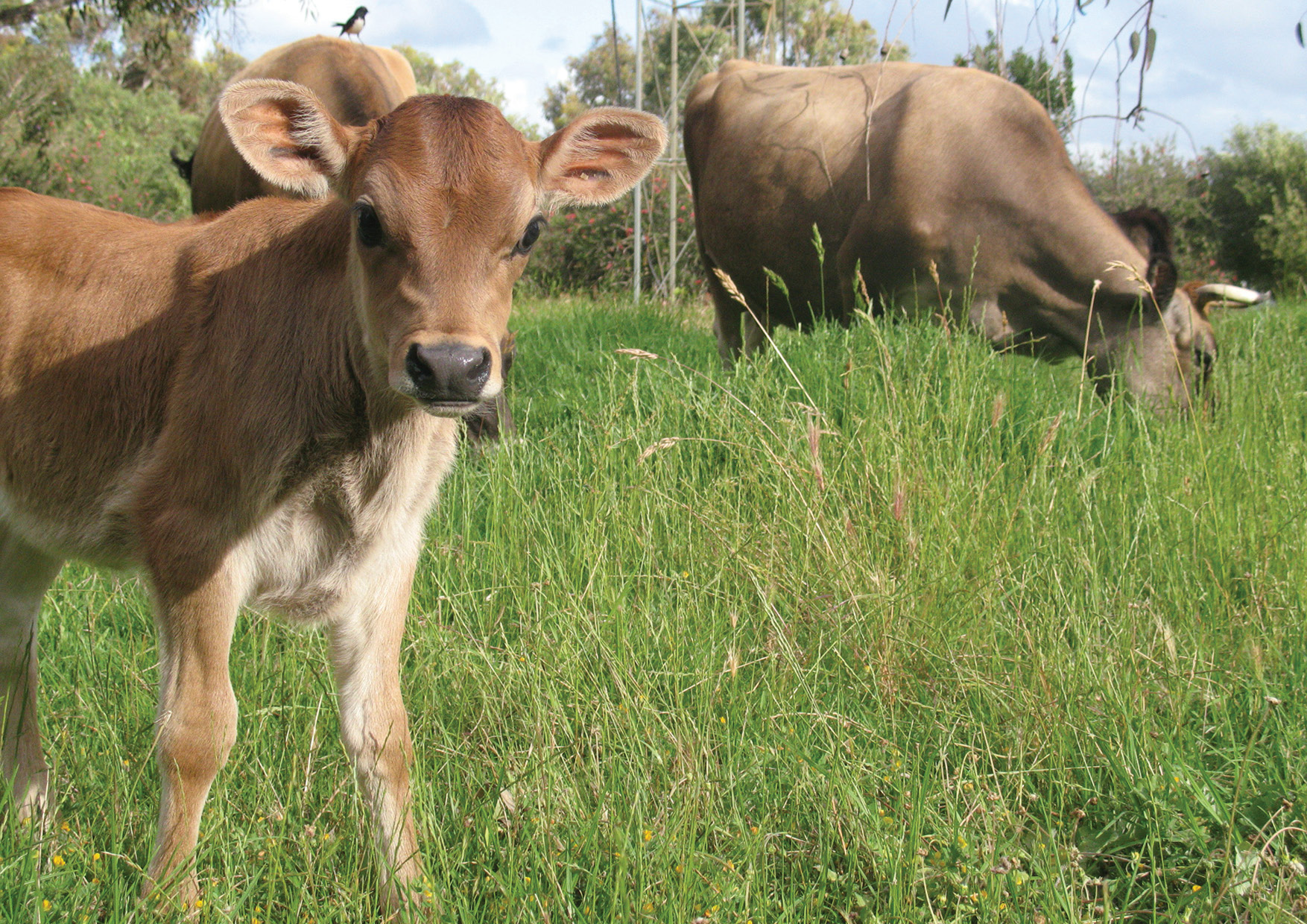
There’s more to cows than milk
Milk, cheese and yogurt are just the start of the story: the cows are also turning pasture and perennial crops into high value organic meat and manure that gets used in our compost, worm farm and compost teas for the garden and orchard. The joy of sitting under a cow and milking her, listening to pail fill, is hard to beat. The wonder of children seeing where milk comes from is unforgettable and the delivery of a new calf is always a cause for celebration.
Photo taken at Fair Harvest in Western Australia and was contributed by Jodie Lane



